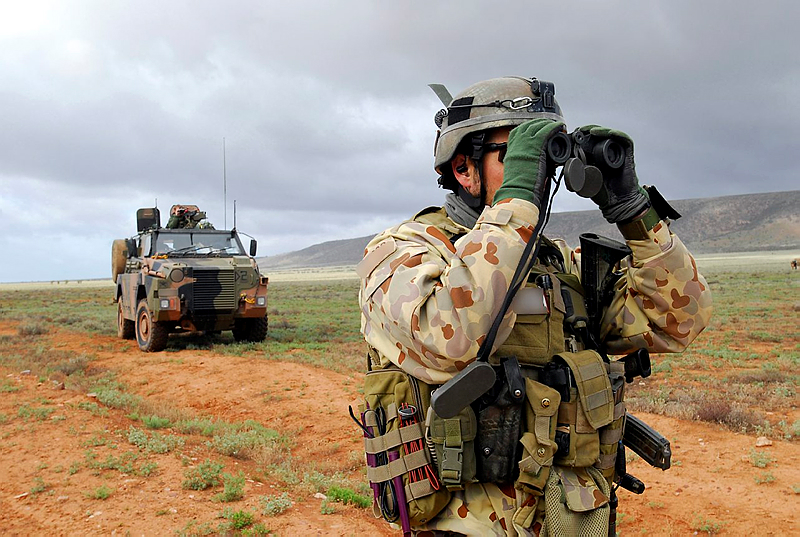
Like so many people with very little firsthand experience of creating and using defence capability at any sophisticated level, Nic Stuart has effortlessly come up with yet another answer to the financial problems of Defence—Reserve manpower.
It was only a matter of time.
Although he does not state it directly, the only fair conclusion from how Nic structured his article is that he believes that the use of reserve manpower was successful in the past, we had too much manpower in WWII, two-year national service was all that was needed in Vietnam, the only thing that we face in the future is an invasion of the continent (and there isn’t much chance of that), and in these financially tight times, greater use of Reserve manpower would enable the RAAF to buy the JSF and the RAN to buy the future submarine. There are, to risk massive understatement, some problems with this line of logic.
What produces quality Australian soldiers, sailors, and airmen and women is not whether they are full or part time, regular or reserve, it is the quality of the recruits combined with first class equipment, quality leadership and realistic training. If a Reserve serviceman or woman does a few weeks per year of training, and so likely never reaches any real level of individual or group deployable operational capability, then you get exactly what you are paying for—not much. I wonder if Nic thinks that being capable in combat is so simple that anyone can do it with just a few weeks’ training per year.
Regular manpower is expensive because it is trained and can be used at short notice. Reserve manpower is not so expensive because it is barely trained and would need to undergo extensive and expensive training before it can be used. There is some leakage into the Reserve from the Regular forces, which is great, but given the size of the ADF, it isn’t possible to generate anything like the numbers of ex-ADF in Australian Reserves, to the extent that the UK or the US employs theirs.
We could happily lessen the amount of full time manpower if we fell for the dangerously simplistic line that peace will break out following our withdrawal from Afghanistan, just because we had a long period of no-conflict after Vietnam. There’s nothing to indicate that this is going to be the case after 2014 except the wishes of those who search for simplistic answers to defence. In fact there’s everything to indicate that we are going into a uniquely unpredictable period, and whatever the future might hold for the world, it’s likely to occur much closer to Australia than in the past 50 years, and it might occur when the relative power of our great and powerful ally has been reduced.
Now is not the time to lessen the readiness of our military but to increase it, which makes this Government’s actions even more bizarre. Nic should be arguing for raising the level of our trained manpower in the Reserve, not creating more lowly trained Reservists. If Nic is going to put forward such a solution to the financial problem of defence, he really should start at what the ‘capital N Need’ for military forces will be. And the Need is driven not by government parsimony, think tank wishful thinking or strategies based on hope, but by a realistic assessment of the strategic environment
There’s only one thing simple about the defence problem that faces Australia. You must start with the Need. What is it that you want the ADF to do in the future to meet the Need (the strategic environment) and what is the structure that enables you to do it? Policy and strategy must be linked directly with force structure and tactics. It has never been thus in Australia since the first White Paper in 1976.
To rush so fast to considering ways of cutting costs to meet a blatantly irresponsible level of government spending is to surrender before the battle has begun. The most common fault currently with the defence debate is to concentrate so hard on how to lower inputs to defence (such as personnel costs), that the output of defence is forgotten. We see this regularly when government and bureaucrats concentrate so hard on so-called efficiencies that they fail to look at effectiveness.
The level of defence spending and the structure of the ADF must be decided by the Need. If any government decides that it will fund defence at a level below the Need, and so increase strategic risk, then it has every right to do so. But the Need must be publicly stated so that every voter can assess the level of risk that the government is taking with our national security, so that voters can make informed choices at the ballot box.
We in the commentariat have not yet made the link between the Need and what the ADF must be able to do, so it is the most nugatory and dangerous of activities to rush to pet input solutions, without considering what the output of defence should be. I agree with Nic that the choices that we will have to make will need to be hard choices, but they should also be smart ones.
Jim Molan is a retired Major General in the Australian Army and is a commentator on defence and security issues. Image courtesy of Department of Defence.

